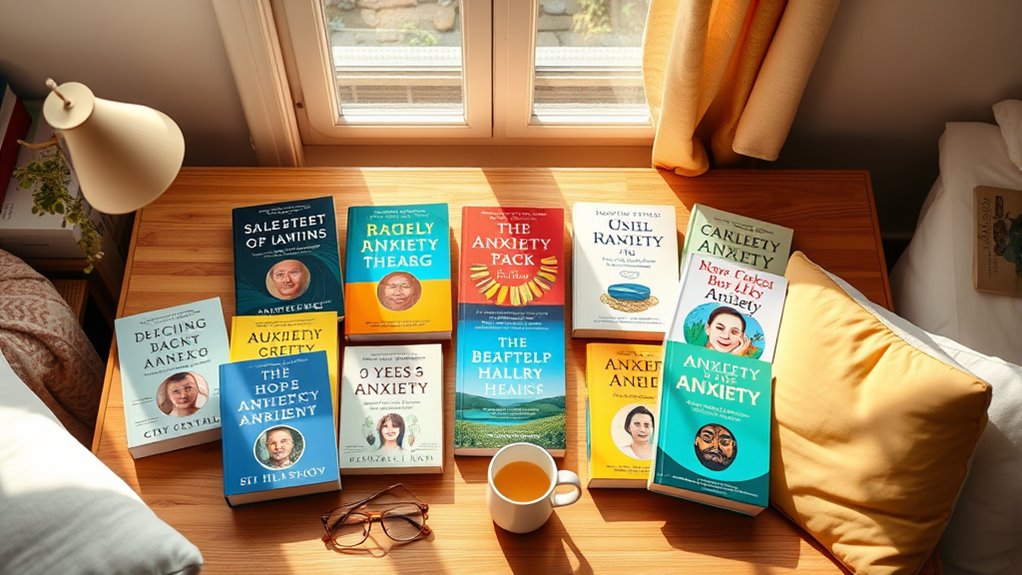If you’re looking for self-help books that truly offer hope and healing for anxiety, I recommend starting with titles like *The Anxiety and Phobia Workbook,* which provides practical, evidence-based techniques like CBT and mindfulness. Books like *Don’t Believe Everything You Think* and *7 Rules for a Calm Mind* teach you how to manage thoughts and find inner peace. If you’re interested in creative or compassionate approaches, *Drawing On Anxiety* and *Self-Love Workbook* are great options. Keep exploring to discover what resonates best with you.
Key Takeaways
- Effective books combine evidence-based strategies like CBT, mindfulness, and relaxation techniques to promote hope and healing for various anxiety types.
- Resources such as *The Anxiety and Phobia Workbook* and *Rules for a Calm Mind* offer practical exercises and quick tips for managing anxiety.
- Many titles focus on self-compassion, emotional healing, and self-awareness to foster resilience and inner peace.
- Creative and scientific approaches, including drawing prompts and neuroscience insights, provide unique stress relief methods.
- Choosing the right book depends on relevance, credibility, practical tools, and alignment with personal preferences and experiences.
The Anxiety and Phobia Workbook (New Harbinger Self-help Workbooks)

If you’re looking for a practical, step-by-step guide to understand and manage anxiety, “The Anxiety and Phobia Workbook” is an excellent choice, especially if you prefer active participation. I’ve found it incredibly helpful because it offers clear strategies grounded in evidence, like CBT, mindfulness, and relaxation techniques. The workbook format encourages me to do exercises and use worksheets that reinforce my learning. It covers different anxiety types — social anxiety, panic attacks, phobias — and guides me on lifestyle factors like sleep and self-esteem. While mainly self-help, it also advises when to seek professional support, making it a thorough, empowering resource.
Best For: individuals seeking an active, practical self-help resource to understand and manage various types of anxiety through evidence-based techniques and exercises.
Pros:
- Offers clear, step-by-step strategies grounded in CBT, mindfulness, and relaxation techniques.
- Includes worksheets and exercises that promote active participation and reinforcement of learning.
- Covers a wide range of anxiety issues, including social anxiety, panic attacks, and specific phobias, with guidance on lifestyle factors.
Cons:
- Some readers may find the detailed content overwhelming or anxiety-inducing at times.
- The workbook may require consistent effort over months to see significant progress.
- It is primarily a self-help resource and may need to be supplemented with professional support for severe cases.
7 Rules for a Calm Mind in a Chaotic World
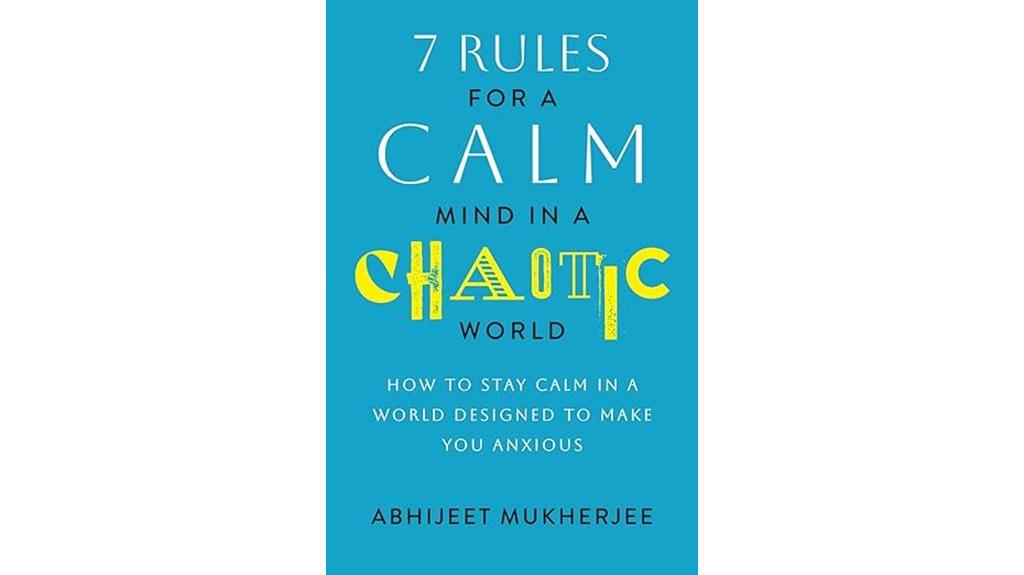
Rules for a Calm Mind in a Chaotic World is an ideal guide for those who feel overwhelmed by the constant noise and unpredictability of modern life. This book offers practical, easy-to-understand strategies rooted in timeless wisdom. It focuses on seven core rules: get clarity, know how to think, express yourself, take care, consume mindfully, communicate well, and be curious. These principles help you shift inward—understanding yourself—and outward—managing external influences. By applying these rules, you can cultivate inner peace, resilience, and perspective, even amid chaos. It’s a straightforward, meaningful approach to slowing down and finding tranquility in a noisy world.
Best For: individuals seeking practical, accessible guidance to cultivate calmness and resilience amidst the chaos of modern life.
Pros:
- Clear, structured insights based on timeless wisdom that are easy to understand and apply.
- Short chapters and summary points facilitate quick review and practical implementation.
- Engaging stories, humor, and vulnerability make the content relatable and enjoyable to revisit.
Cons:
- Some readers may find the principles too simple or basic, requiring additional effort for deeper transformation.
- The focus is primarily on mental habits; it may not address all external factors contributing to chaos.
- As a foundational guide, it may need to be supplemented with more specialized strategies for complex issues.
Stop Overthinking: Techniques to Relieve Stress and Focus on the Present
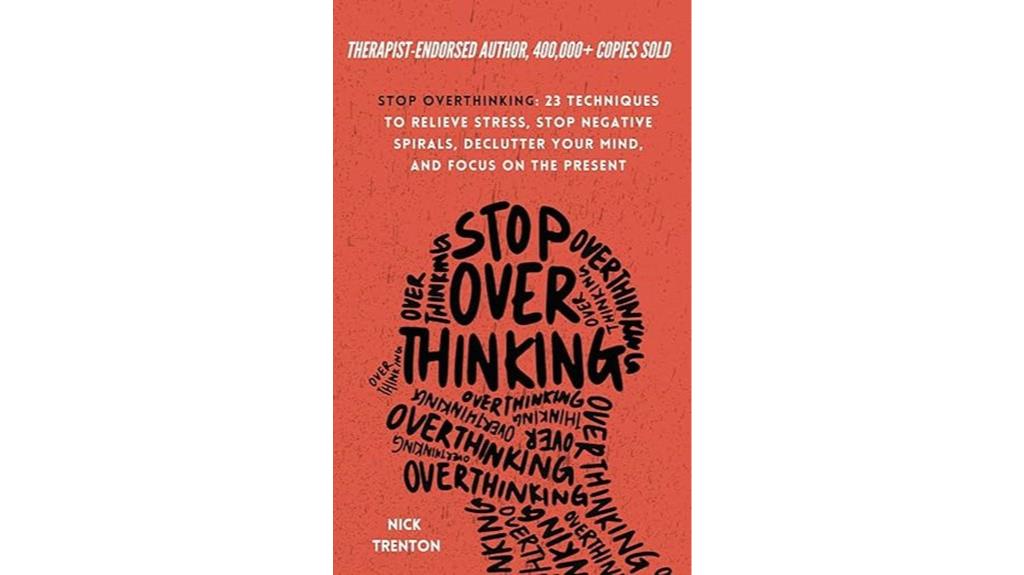
For anyone overwhelmed by persistent overthinking and seeking straightforward tools to stay grounded, “Stop Overthinking” offers practical techniques that can be applied immediately to reduce stress and stay present. The book shares 23 actionable methods, like the 5-4-3-2-1 grounding technique and the 4 A’s of stress management—Avoid, Alter, Accept, Adapt—making it easy to implement daily. Its clear, conversational style helps demystify complex thoughts and provides relief from mental chatter. Many readers find these strategies effective, often noticing reduced anxiety within weeks. Whether you’re new to self-help or looking for fresh perspectives, this book offers practical, compassionate guidance to help you focus on the present and regain control.
Best For: individuals overwhelmed by overthinking and stress seeking practical, easy-to-apply techniques to stay grounded and present.
Pros:
- Offers 23 actionable techniques that are simple, effective, and easy to implement immediately.
- Clear, conversational writing style makes complex psychological concepts accessible and relatable.
- Provides tangible relief from anxiety and mental chatter, often leading to noticeable improvement within weeks.
Cons:
- Some sections lack in-depth explanations, which may leave readers wanting more detailed guidance.
- The book’s focus is mainly on practical techniques; it may not address underlying deep-seated mental health issues.
- As a quick, approachable read, it might require repeated practice to see sustained long-term results.
Dont Believe Everything You Think Book (Joseph Nguyen)

Are you looking for a straightforward way to ease your anxiety and quiet your overactive mind? Joseph Nguyen’s *Don’t Believe Everything You Think* offers simple, accessible guidance to find inner peace. It challenges the idea that our thoughts define us, encouraging mindfulness and present-moment awareness. Many readers report feeling lighter, more centered, and less overwhelmed after applying its practical advice. The book’s clear stories and short chapters make it easy to understand and implement right away. If overthinking and mental clutter are holding you back, this gentle yet powerful read can help you reconnect with your true self and find lasting calm.
Best For: individuals seeking simple, practical guidance to reduce anxiety, overthinking, and emotional distress while reconnecting with their true selves.
Pros:
- Clear, accessible writing style that makes complex ideas easy to understand
- Practical, actionable advice that can be implemented immediately
- Promotes mindfulness and present-moment awareness to foster inner peace
Cons:
- Short chapters may feel too brief for those seeking in-depth philosophical exploration
- Some readers might desire more detailed techniques or exercises
- The focus on simplicity may not satisfy those looking for comprehensive self-help strategies
The Magic of Mindful Self-Awareness Book
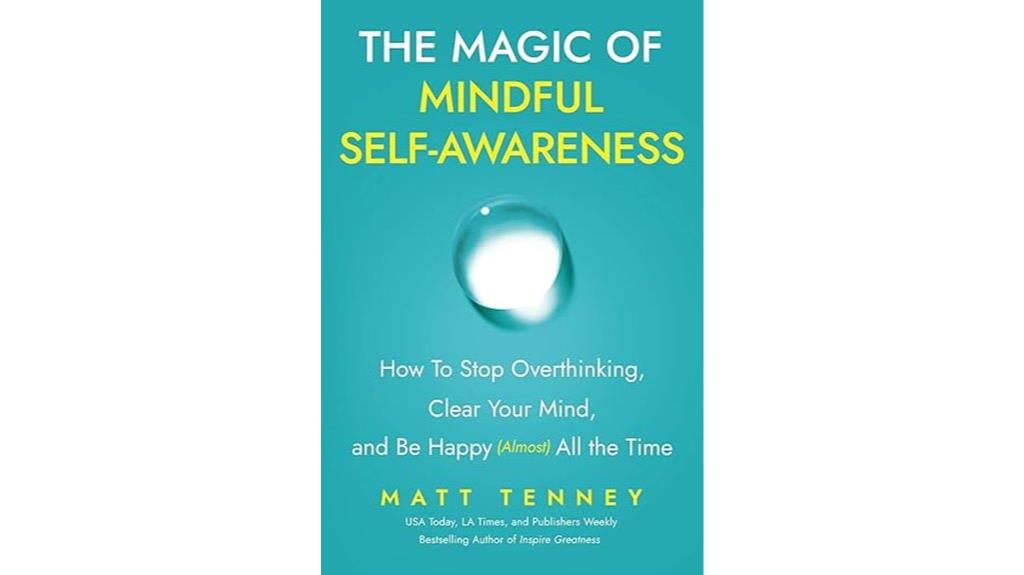
The Magic of Mindful Self-Awareness Book stands out as an excellent resource for both beginners and seasoned meditators seeking practical ways to reduce anxiety. I’ve found its straightforward advice and personal stories make mindfulness accessible and actionable. The book helps diminish overthinking, racing thoughts, and negative emotions by fostering self-awareness and emotional regulation. Even experienced meditators plan to revisit it regularly to reinforce their practice. Its clear, concise guidance makes it easy to integrate into daily routines, encouraging living intentionally and cultivating happiness. Overall, it’s a practical tool that inspires positivity and supports ongoing mindfulness, making it invaluable for managing anxiety.
Best For: individuals seeking practical, easy-to-apply techniques to reduce anxiety, improve self-awareness, and incorporate mindfulness into daily life, regardless of their meditation experience.
Pros:
- Clear, straightforward guidance suitable for beginners and experienced practitioners alike
- Personal stories and practical tips make mindfulness accessible and relatable
- Encourages consistent practice and living intentionally, fostering long-term habits
Cons:
- Does not introduce revolutionary or complex techniques for advanced mindfulness practitioners
- Some readers may need to supplement with additional resources for deeper practice
- The concise format, while accessible, may leave those looking for in-depth theoretical explanations wanting more
The Let Them Theory Book
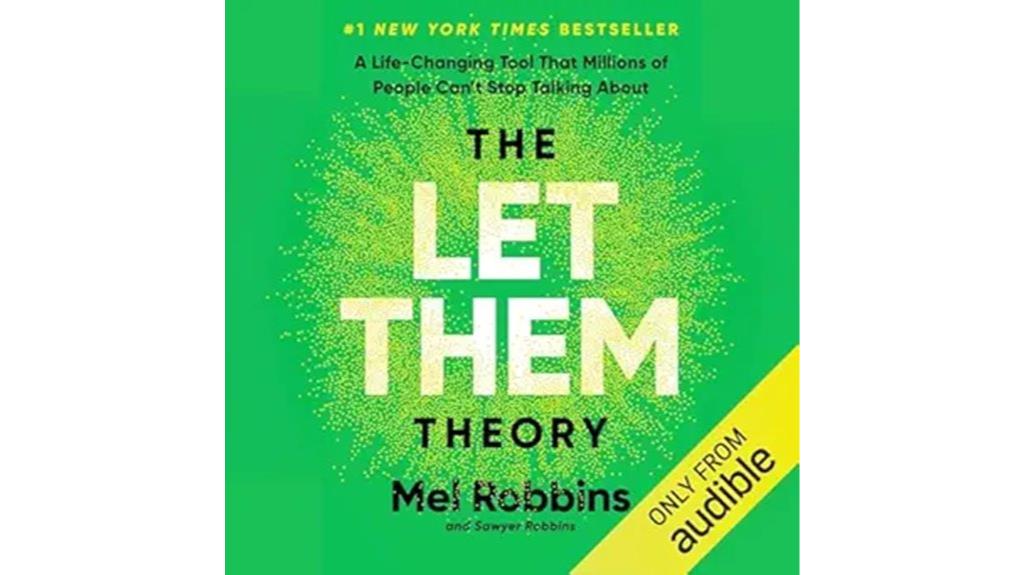
The Let Them Theory Book by Mel Robbins stands out as an excellent choice for anyone ready to embrace personal responsibility and let go of controlling others. I found its practical advice on unhooking from codependency and trusting others’ choices incredibly empowering. Robbins’ clear language and soothing narration make complex concepts easy to understand and apply. The book emphasizes boundaries, self-awareness, and resilience, helping me shift my mindset and reduce anxiety about controlling outcomes. Listening to her insights felt relatable and motivating. If you’re seeking a straightforward, impactful approach to emotional independence, this book offers valuable strategies to foster growth and authentic living.
Best For: individuals seeking practical self-development guidance on emotional independence, boundary-setting, and reducing codependency.
Pros:
- Clear, straightforward language that makes complex concepts easy to understand and implement
- Engaging narration by Mel Robbins herself, adding authenticity and relatability
- Practical strategies backed by research and real-life examples to foster personal growth
Cons:
- Some sections may feel repetitive, although this can reinforce learning for many readers
- Minor physical wear on the book’s binding, which does not affect content quality
- Focus primarily on self-responsibility and boundaries, which may not cover all personal development needs
Break Free and Heal Your Inner Child
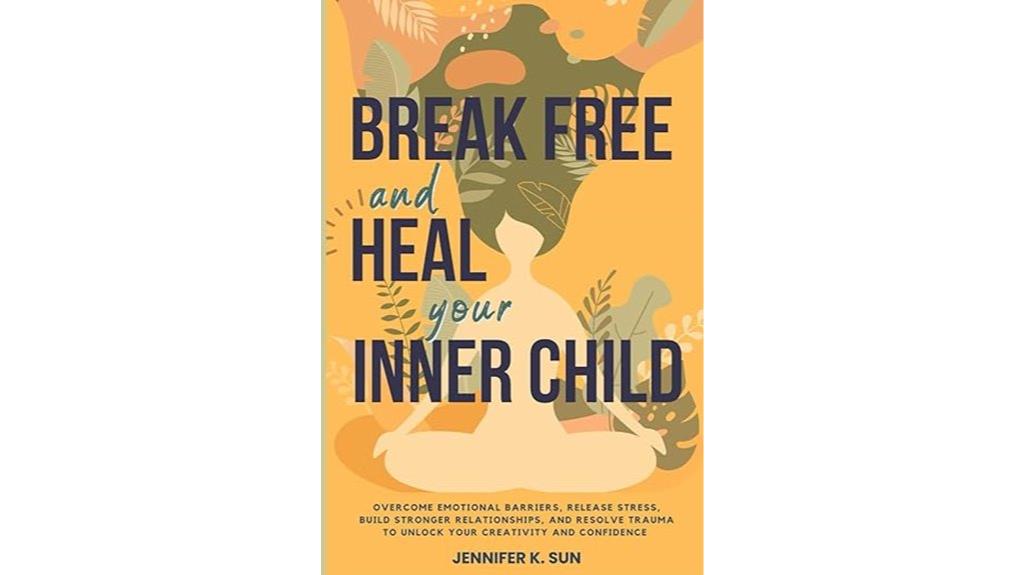
If you’re someone seeking practical tools to heal deep emotional wounds, “Break Free and Heal Your Inner Child” offers a compassionate, straightforward approach that resonates with those ready to explore their past. Jennifer Sun combines heartfelt stories, scientific insights, and actionable exercises like journaling, mindfulness, and reparenting techniques. The book emphasizes self-compassion and understanding your inner child, helping you identify emotional barriers such as low self-esteem and perfectionism. Many readers find it accessible and transformative, re-reading key sections to gain clarity and confidence. It’s a powerful guide to releasing trauma, fostering personal growth, and building healthier, more authentic relationships.
Best For: individuals seeking practical, compassionate guidance to heal emotional wounds, understand their inner child, and cultivate healthier relationships.
Pros:
- Combines heartfelt storytelling with scientific research for a balanced approach
- Offers actionable tools like journaling, mindfulness, and reparenting techniques
- Highly accessible, encouraging reflection and ongoing personal growth
Cons:
- Some readers might find certain exercises challenging or emotionally intense
- The straightforward style may not appeal to those preferring more academic or theoretical texts
- Digital integration advice may require additional effort or familiarity with technology
Unwinding Anxiety Book on Breaking Worry and Fear Cycles
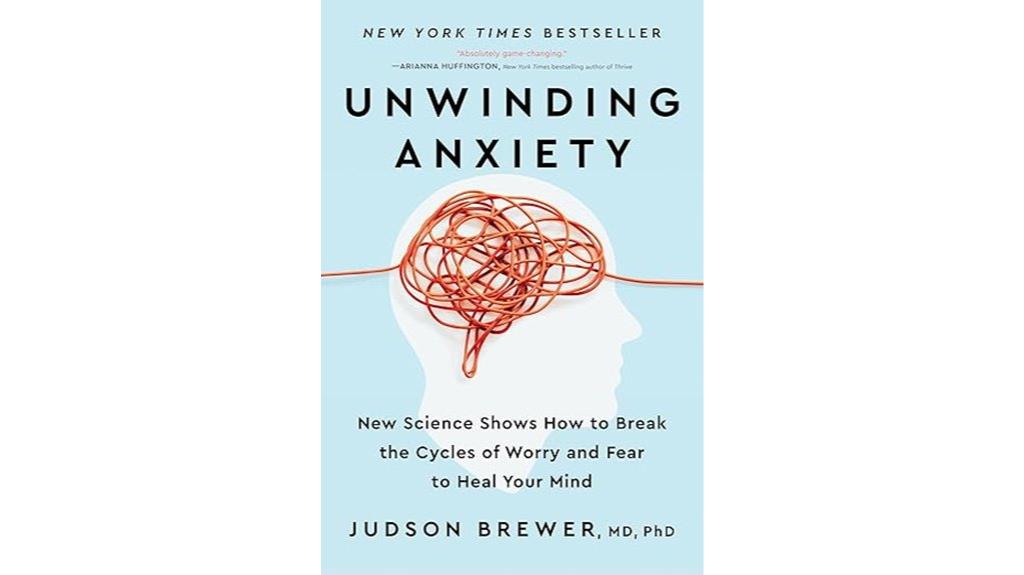
Readers who want a neuroscience-based approach to breaking worry and fear cycles will find “Unwinding Anxiety” especially helpful. Dr. Jud Brewer explains that anxiety isn’t just about feelings but about habitual brain loops involving triggers, behaviors, and rewards. By understanding these habits, you can intervene more effectively. The book emphasizes mindfulness techniques like the RAIN method to increase self-awareness and sense bodily responses, helping to disrupt automatic reactions. Brewer shares personal stories and practical strategies for replacing unhelpful habits with rewarding ones. This science-backed approach offers a clear path to rewiring your brain, reducing anxiety, and creating healthier, more resilient habits over time.
Best For: individuals seeking a neuroscience-based, mindfulness-focused approach to understanding and breaking worry and fear cycles related to anxiety.
Pros:
- Provides a scientifically grounded framework for understanding anxiety as habitual brain loops.
- Offers practical mindfulness techniques, like the RAIN method, to increase self-awareness and emotional regulation.
- Incorporates personal stories and real-life examples to make complex neuroscience concepts accessible and relatable.
Cons:
- Some readers find the initial sections slow or repetitive, especially in introducing habit concepts.
- Analogies used (e.g., quitting smoking) may feel less directly relevant to all types of anxiety.
- The emphasis on habits and neuroscience may be challenging for those seeking more direct, emotion-focused coping tools without a strong scientific background.
Retrain Your Brain Workbook for Managing Depression and Anxiety
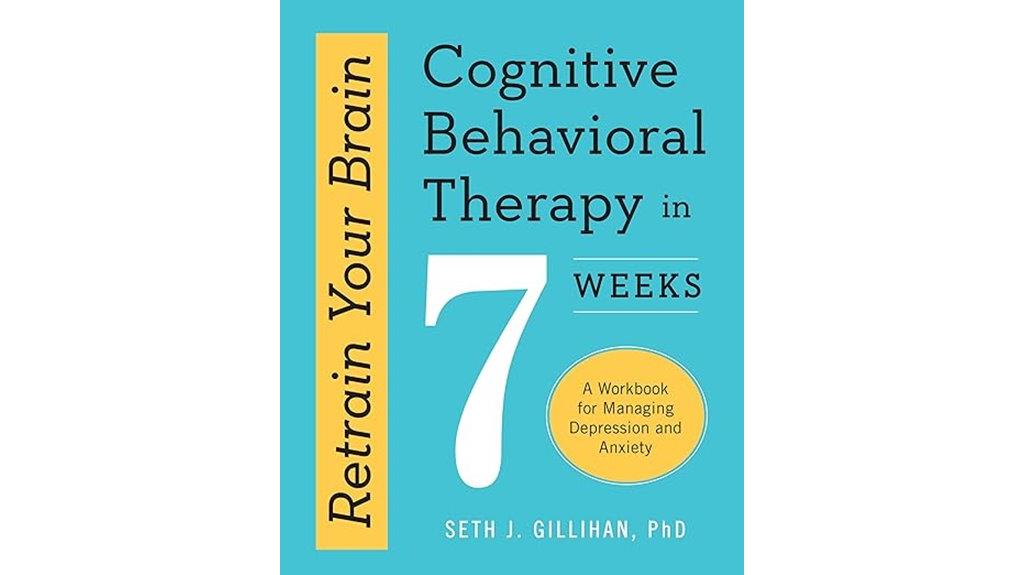
For anyone ready to take active steps toward managing depression and anxiety, “Retrain Your Brain: Cognitive Behavioral Therapy in 7 Weeks” offers a practical, easy-to-follow workbook that guides you through proven CBT techniques. It provides a structured, week-by-week plan similar to therapy sessions, making it accessible for beginners. Many users report significant improvements in anxiety, negative thoughts, and daily functioning—sometimes surpassing months of therapy. The exercises and prompts empower you to become your own therapist, fostering self-awareness and skill development. While it’s not a quick fix, consistent effort can lead to meaningful, long-term relief.
Best For: individuals ready to actively work on managing depression and anxiety through structured, self-guided CBT techniques who are motivated to dedicate time and effort to long-term mental health improvement.
Pros:
- Easy-to-follow, structured weekly plan that mimics therapy sessions, making it accessible for beginners.
- Empowers users to become their own therapists with practical exercises and prompts.
- Demonstrates significant improvements in anxiety, negative thinking, and daily functioning with consistent effort.
Cons:
- Some exercises may be too basic or not engaging enough, especially for those in a severe depressive state.
- Effectiveness depends heavily on the user’s motivation and willingness to practice regularly.
- Might conflict with personal beliefs for some, particularly regarding grounding and mindfulness approaches rooted outside of their faith.
Anxiety Self-Help Guide for Panic Disorder

Are you struggling to make sense of your panic attacks and feeling overwhelmed by the cycle of anxiety? “Anxiety: Panicking About Panic” by Joshua Fletcher offers a clear, compassionate guide to understanding and managing panic disorder. It breaks down symptoms, explains the anxiety loop, and shows you how to recognize that panic attacks are temporary and not dangerous. Fletcher’s relatable stories and practical strategies help you accept your symptoms, break free from the vicious cycle, and regain control. This book provides hope, reassurance, and straightforward tools to help you feel heard, understood, and empowered on your journey to healing.
Best For: individuals experiencing panic attacks and seeking a clear, compassionate self-help guide to understand and manage their anxiety effectively.
Pros:
- Provides practical, straightforward strategies to break the anxiety loop and regain control
- Relatable and reassuring tone that validates sufferers’ experiences
- Includes helpful tools like the Anxiety Scoring Method to monitor and manage symptoms
Cons:
- Some readers may find the explanation of control during panic attacks slightly confusing
- The focus is primarily on self-help, which might not replace professional treatment for severe cases
- As a self-guided book, it requires motivation and engagement from the reader to see results
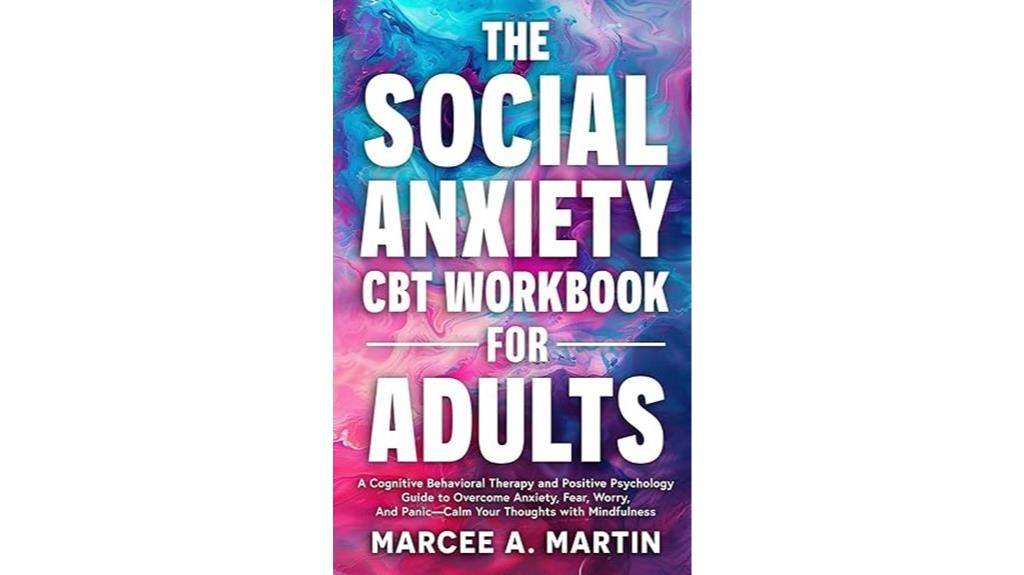
If social situations make you nervous and you’re looking for practical strategies to build confidence, The Social Anxiety Workbook for Adults is an excellent choice. It offers clear, easy-to-follow exercises rooted in CBT and positive psychology, helping you manage nerves and improve social interactions. The workbook covers how anxiety develops and provides routines, mindfulness practices, and coping skills you can implement at home. Many users find it quick to read and highly effective, experiencing faster progress than expected. Despite some formatting quirks, the practical tools and relatable guidance make this book a valuable resource for overcoming social anxiety and feeling more confident in any social setting.
Best For: adults who experience social anxiety and want practical, easy-to-implement strategies to build confidence and improve social interactions.
Pros:
- Provides clear, step-by-step exercises based on CBT and positive psychology techniques.
- Quick to read with many users experiencing rapid improvements in social confidence.
- Offers practical routines, mindfulness practices, and coping skills for at-home use.
Cons:
- Some users find the formatting challenging due to minimal spacing and dense text.
- The focus is primarily on social anxiety in larger groups, which may limit relevance for some specific social fears.
- As a workbook, it requires active participation, which might be less appealing for those preferring passive learning.
Practical Guide to Managing Stress and Anxiety
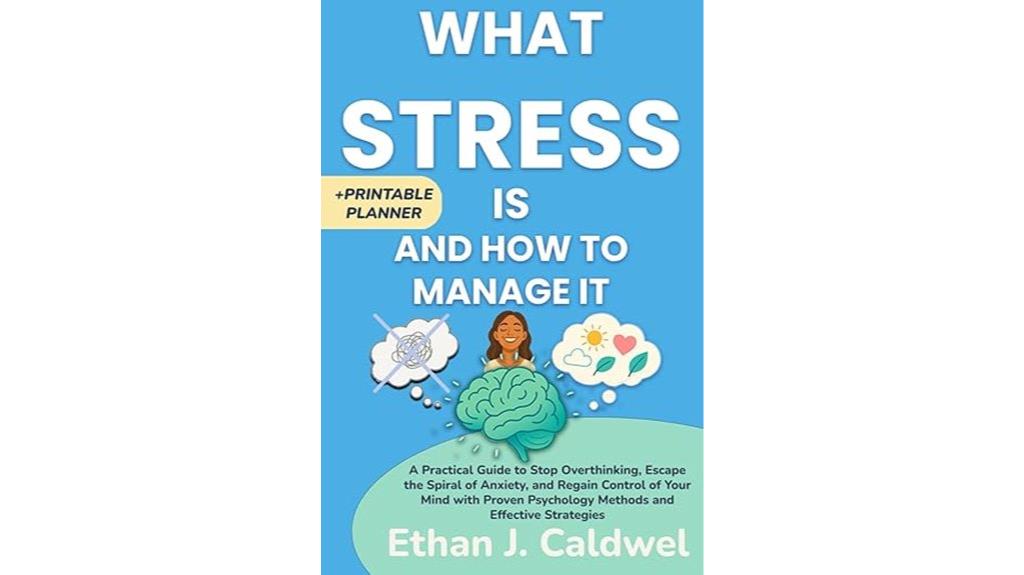
This practical guide is perfect for anyone overwhelmed by daily stress or seeking straightforward tools to regain control. I’ve found that understanding what stress is and how it impacts both mind and body makes a huge difference. The book offers simple, realistic strategies like breathwork, body awareness, and mindful pauses—tools you can use anytime, anywhere. Its RESET method provides a flexible way to stop mental spirals and ground yourself during overwhelming moments. I appreciate how relatable and accessible it is, offering small actions that can lead to big relief. It’s an empowering resource to help you manage stress and find calm amid chaos.
Best For: individuals feeling overwhelmed by daily stress or seeking practical, accessible tools to manage anxiety and regain control.
Pros:
- Provides clear, realistic strategies like breathwork and mindful pauses that can be used anytime, anywhere.
- Introduces the flexible RESET method to help stop mental spirals and ground oneself during overwhelming moments.
- Relatable and straightforward, making complex stress science easy to understand and apply in daily life.
Cons:
- May require consistent practice to see significant long-term benefits.
- Some readers might prefer more structured or in-depth techniques for deeper stress management.
- The emphasis on small, incremental actions might feel insufficient for those seeking intensive intervention.
Unfu*k Yourself: Get Out of Your Head and into Your Life
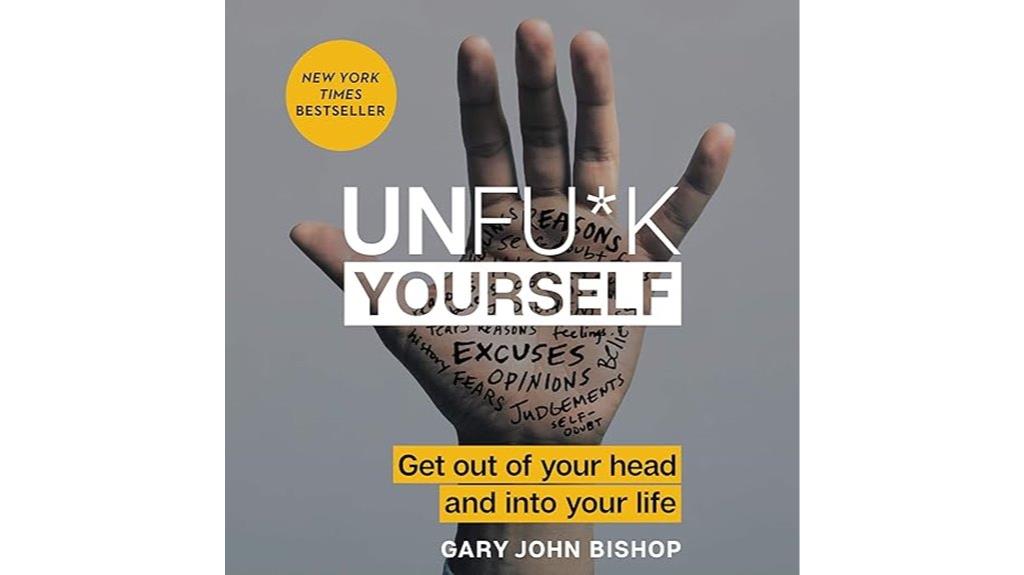
Unfu*k Yourself: Get Out of Your Head and into Your Life is especially suited for readers who prefer blunt, straightforward advice when facing anxiety. I found this book empowering because it cuts through the fluff and gets to the core of what really matters—taking action. Gary Bishop’s no-nonsense tone, with profanity and raw honesty, makes it easy to stay engaged. It offers practical tools to challenge self-sabotaging thoughts and shift your mindset quickly. If you’re tired of superficial positivity and want honest, tough-love guidance, this book can help you get out of your head and start living more intentionally.
Best For: individuals seeking blunt, practical guidance to overcome self-doubt, anxiety, and self-sabotage with a straightforward, no-nonsense approach.
Pros:
- Clear, direct language that motivates and energizes readers to take action
- Practical tools and memorable quotes that are easy to apply in real-life situations
- Engaging, raw tone that resonates with readers tired of superficial positivity
Cons:
- Occasional contradictions between advocating positive self-talk and criticizing it can cause confusion
- Broad scope may lead to overlapping ideas without deep elaboration on philosophical concepts
- The blunt style and profanity might not appeal to more sensitive or traditional readers
Self-Love Workbook for Women
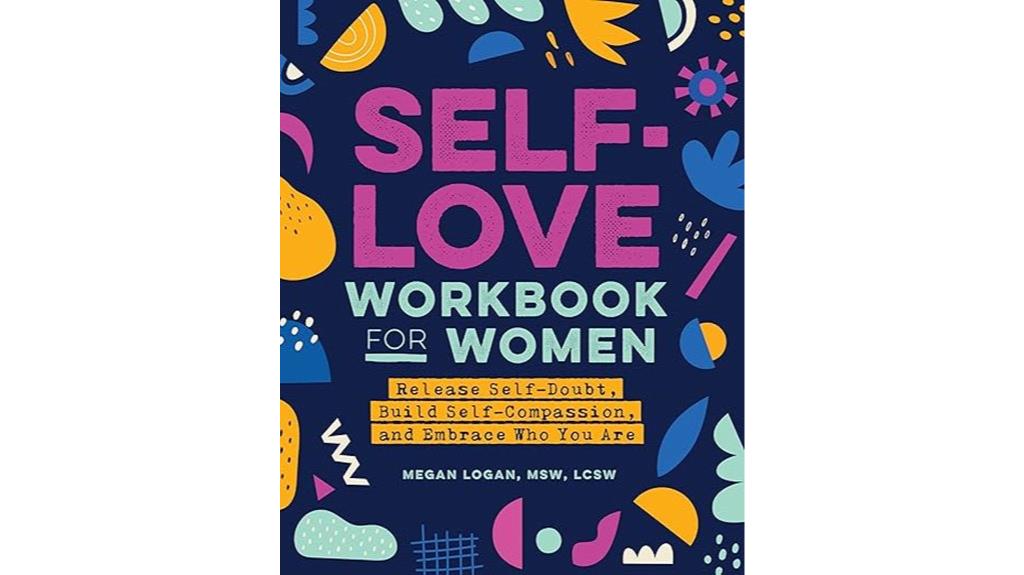
Are you a woman seeking to boost your self-confidence and heal from past wounds? The Self-Love Workbook for Women is a powerful tool that many find transformative. It promotes self-awareness, compassion, and emotional healing through engaging prompts and exercises. Users report feeling more relaxed and renewed after consistent journaling, especially when facing trauma or rejection. The colorful, well-structured pages make self-care accessible and inspiring. While some exercises demand time and effort, the overall impact is profound, fostering growth and self-acceptance. If you’re ready to nurture yourself and embrace true self-love, this workbook can be a meaningful step on your journey.
Best For: women seeking to enhance self-confidence, heal from past trauma, and cultivate self-love through reflective exercises and emotional growth.
Pros:
- Promotes self-awareness, compassion, and emotional healing effectively
- Well-organized, colorful pages with clear prompts making self-care engaging
- Supports personal growth over an extended period, fostering lasting change
Cons:
- Some exercises require significant time and emotional energy, which may be challenging for busy schedules
- Minor printing errors, such as in the self-compassion quiz, can affect clarity
- Not a superficial read; it can evoke strong emotions and requires full commitment
Drawing On Anxiety: Finding Calm Through Creativity (Volume 2)
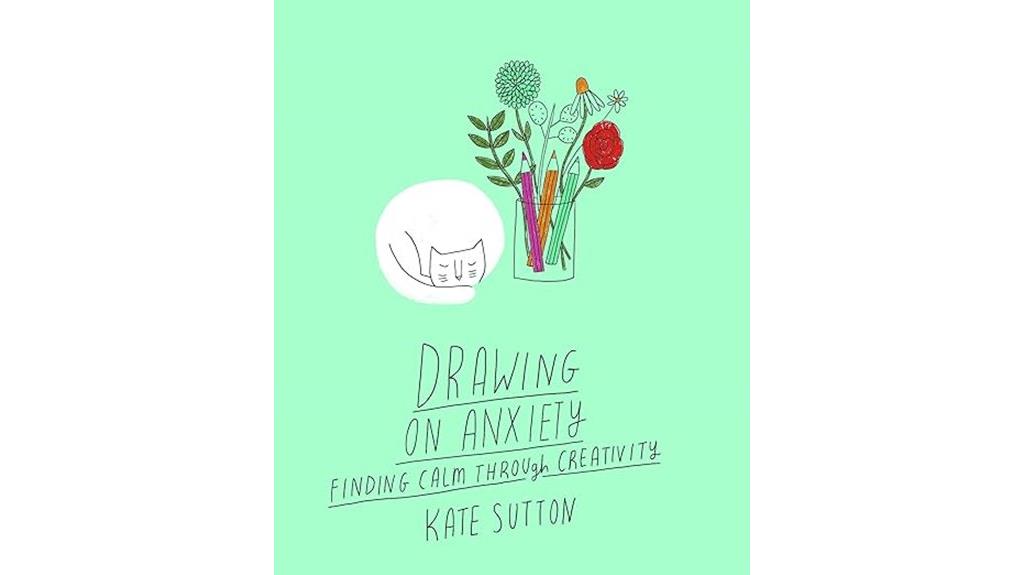
If you’re looking for a gentle, accessible way to manage anxiety without needing artistic talent, “Drawing on Anxiety: Finding Calm Through Creativity (Volume 2)” might be just what you need. This small, portable book offers simple drawing prompts that help distract from worries and promote calmness. You don’t have to be an artist—its open layouts and friendly illustrations encourage playful exploration and self-expression. Many users find it a soothing self-care activity that shifts focus away from anxiety and fosters a positive mindset. Whether used daily or as needed, this book provides a peaceful, screen-free outlet for emotional relief and creative release.
Best For: individuals seeking a gentle, creative, and accessible way to manage anxiety and promote relaxation without requiring artistic skills.
Pros:
- Encourages playful self-expression and mindfulness through simple drawing prompts.
- Portable size makes it easy to use anywhere for quick stress relief.
- Suitable for all skill levels, including perfectionists or those feeling inadequate in art.
Cons:
- Some users may desire more variety or depth in prompts for ongoing engagement.
- Punctuation errors noted in the text might slightly affect the reading experience.
- Not a comprehensive therapy tool; best used as a supplementary self-care activity.
Factors to Consider When Choosing Self-Help Books on Anxiety
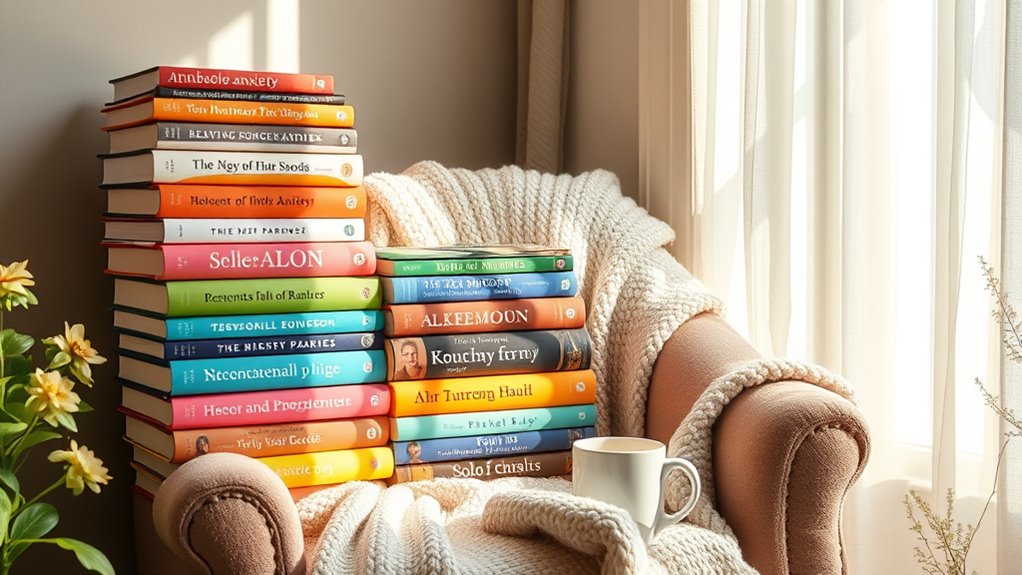
When choosing a self-help book on anxiety, I look for one that truly resonates with my personal experiences and needs. I also consider the approach and techniques used, making sure they align with what I find helpful, and I pay attention to the author’s credibility. Ultimately, I want a book that’s accessible, engaging, and offers practical advice I can apply daily.
Personal Relevance
How do you guarantee a self-help book on anxiety truly meets your needs? It starts with choosing one that resonates with your personal experience. The strategies should target your specific triggers, making them more effective. Consider your skill level—whether you’re a beginner or more advanced—to ensure the content feels accessible and engaging. Reflect on your learning style, whether you prefer reading, workbook exercises, or creative activities, so the book suits how you best absorb information. Also, think about your mental health background, such as trauma history or co-occurring conditions, to find content that addresses your unique challenges. Finally, select a tone and approach that feel authentic and comfortable to you, boosting your motivation to apply what you learn for lasting change.
Approach and Techniques
Choosing a self-help book on anxiety involves more than just selecting a popular title; it requires understanding the approaches and techniques it uses. Different books focus on methods like cognitive-behavioral techniques, mindfulness, acceptance, or habit reversal, so think about which method aligns with your learning style and preferences. Common strategies like grounding exercises, breathing techniques, journaling, or creative activities can be effective, but choose ones you feel comfortable practicing regularly. Evidence-based approaches such as CBT and mindfulness have solid scientific backing, making them reliable options. Also, consider if the book offers step-by-step exercises, worksheets, or practical tools, as these can increase your engagement and help you actively manage anxiety through both thoughts and behaviors.
Author Credibility
Ever wondered how to tell if a self-help book on anxiety is trustworthy? One key factor is the author’s credentials. Look for degrees in psychology, counseling, or psychiatry, which show they have formal expertise. Evidence of research or clinical experience adds credibility, demonstrating they’ve applied their knowledge practically. Recognized authors with published work in reputable mental health journals or organizations are usually more reliable. Personal experience with anxiety can add authenticity, but it should be backed by factual knowledge and professional insight. Additionally, reputable authors often include references, citations, or endorsements from mental health professionals, further validating their authority. These indicators help ensure you’re choosing a book rooted in credible expertise that genuinely supports your healing journey.
Accessibility and Style
When selecting a self-help book on anxiety, it’s important to take into account its accessibility and style to guarantee it resonates with you. I look for books with clear, jargon-free language that are easy to understand, regardless of my prior knowledge. An engaging, conversational tone helps keep me interested and makes complex topics feel relatable. I also consider whether the book includes practical exercises, worksheets, or prompts, as these active elements reinforce learning and encourage self-reflection. Additionally, the formatting matters—large font, good spacing, and a clean layout make reading more comfortable. Finally, I pay attention to the tone—whether it’s compassionate, straightforward, or humorous—as it influences how well the material connects with me personally.
Practical Application
Practical application is the key to turning self-help advice into real change. When choosing a book, look for those that include exercises and worksheets that let you actively practice techniques like mindfulness, breathing, or cognitive restructuring. Clear, step-by-step instructions make it easier to implement strategies consistently. Real-life examples and scenarios help you see how to adapt techniques to your daily life, making them more relatable and effective. Books that emphasize routines or habit-forming practices support long-term progress, ensuring you build sustainable coping skills. Additionally, supplementary tools such as journaling prompts, action plans, or printable resources can enhance your engagement and practical use. Ultimately, a book that prioritizes hands-on exercises and clear guidance will empower you to turn knowledge into meaningful, lasting change.
Supplementary Support
How can you guarantee that self-help books on anxiety truly support your journey? The key is to see them as complementary tools, not replacements for professional treatment. Many books include practical exercises and worksheets that reinforce skills learned in therapy, making them more effective. When you combine reading with support groups or online communities, you create a sense of connection and accountability that boosts progress. Self-help books also educate you about anxiety, helping you understand your symptoms and triggers outside clinical settings. By consistently using these resources as part of a broader mental health plan, you can maintain your progress and prevent setbacks. Choosing books that encourage active engagement and supplement your existing support system is essential for meaningful, lasting change.
Frequently Asked Questions
How Do I Choose the Right Self-Help Book for My Anxiety?
To choose the right self-help book for your anxiety, I recommend first identifying what resonates with you—whether it’s mindfulness, cognitive techniques, or personal stories. I look for books with positive reviews and author credentials. I also consider whether the approach feels practical and compassionate. Trust your instincts; if a book speaks to you and feels manageable, it’s likely a good fit to support your healing journey.
Can Self-Help Books Replace Therapy for Anxiety Treatment?
Self-help books can’t fully replace therapy for anxiety, but they can be a valuable supplement. I believe they offer useful strategies and comfort, especially when therapy isn’t immediately available. However, if your anxiety is severe or persistent, I strongly recommend seeking professional help. Therapy provides personalized guidance and support that books alone can’t provide. Combining both can give you the best chance at managing and overcoming anxiety effectively.
Are These Books Suitable for Severe Anxiety or Panic Attacks?
Think of these books as gentle guides rather than a lifeboat in stormy seas. For severe anxiety or panic attacks, I’d say they can complement professional help but shouldn’t replace it. They offer valuable insights and coping tools, yet intense symptoms often require tailored therapy. If you’re struggling deeply, I strongly recommend consulting a mental health professional alongside reading to ensure thorough support and safety.
How Quickly Can I Expect to See Results From These Books?
I’ve found that you might see some progress within a few weeks of consistently applying the strategies in these books. However, everyone’s different, and real change often takes time. I suggest giving yourself at least a month or two, being patient, and practicing the techniques daily. Remember, small steps add up, and persistence is key. Don’t get discouraged if results come gradually—hope and healing are worth the effort.
Do These Books Address Anxiety Caused by Specific Traumas?
Yes, many of these books do address anxiety caused by specific traumas. I’ve found that authors often include chapters or sections dedicated to trauma-related anxiety, offering tailored strategies and insights. While some focus on general anxiety, others dive deep into healing from particular traumatic experiences. I recommend checking the book’s description or reviews to see if it’s specifically geared toward trauma, so you can find the most relevant support for your situation.
Conclusion
If you’re ready to conquer anxiety once and for all, these books are your secret weapons—your personal army of hope, calm, and clarity. Imagine transforming your mind into a fortress of peace, where worry melts away like snow in the sun. Don’t wait for a miracle—grab these books and start your journey today. Because, honestly, the life you deserve is just a page turn away. Let’s do this!
